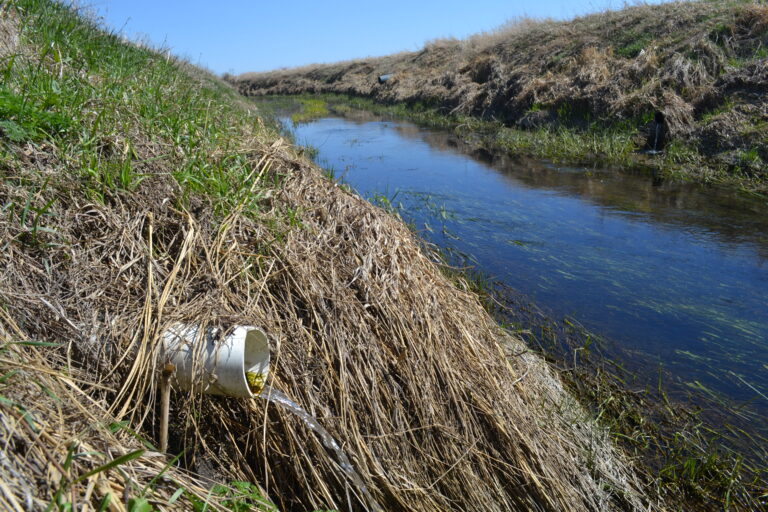When it rains on a farm here in central Illinois, the water that runs off into local streams and rivers carries with it excess nutrients leftover from fertilizer. Those nutrients eventually flow into the Mississippi River and, ultimately, into the Gulf of Mexico.
And while you can’t see them with the naked eye, those nutrients – namely nitrogen and phosphorus – cause a whole host of water quality issues here locally and further downstream.
That’s why Illinois has a plan in place to reduce its farm runoff. The basic goal of the Illinois Nutrient Loss Reduction Strategy is to cut those nutrient loads almost in half. But according to its most recent report, nitrogen and phosphorus levels have gone up again — by 13% and 35% respectively.
Illinois Newsroom’s agriculture reporter Dana Cronin spoke with Max Webster, Midwest Policy Manager with American Farmland Trust, who works on the strategy, to find out why.
(This interview has been lightly edited for clarity)
Dana Cronin: Every two years we’re given an update on our progress in reaching those goals laid out in the strategy, and we just got the latest biennial report last week, which showed an increase in nutrient loads. Max, why is that?
Max Webster: One of the big drivers for that increased loss, those were just two really wet years. So there was a lot of rainfall, a lot of flooding and just a lot of extreme precipitation events that caused more nutrients to wash out of soils, to wash off the streets into waterways and really increase river flows to the point where those nutrients couldn’t be captured and treated by facilities. So a lot of what the report is speaking to are some of these new challenges that are created by climate change in achieving these goals and the increased regularity that we’re expecting to see some of these intense rainfall events and more of these wet years. They create new challenges for addressing nutrient loss and thinking about how the strategy should be implemented. That, I think, is top of mind for partners to try to figure out now how we can address that.
DC: Right, I mean, that was my exact next question. Is this increase in rainfall, is that being taken into account?
MW: Yeah. So it’s a big need area to integrate climate thinking into how programs work in the state of Illinois. Right now, if you look at the original Nutrient Loss Reduction Strategy, as well as the guidance for some of the other water quality programs that the state administers, there is no guidance language in there at this point for addressing climate risk. And so how to think about, address and respond to the changing baseline that we’re seeing in terms of increased precipitation, not just being an extreme thing that happens every now and again, but a regular feature that we’re experiencing year after year… what are the things that we need to do now that are going to address that challenge?
DC: Max, can you just remind me what is at stake here? Why do we care about how much phosphorus and nitrogen is flowing into our waterways?
MW: Number one, nutrient loss to our waterways puts stress on all kinds of areas of our lives that we may or may not know about. So it’s obvious when you see something like an algal bloom in a river and, you know, you’re being advised not to go swim there or fish there. But that has impacts to the community that relies on that river for drinking water. Are they going to have to increase their utility rates to have to pay for the new treatment system that has to be installed to deal with those excess nutrients? It has impacts for the bait shop down the road where, you know, fishermen aren’t coming anymore and then that has implications for the recreational economy around and so on and so forth. But it also is just a really big indicator of how resilient our farms and our agricultural economy are to dealing with shocks and stresses as well. Nutrient loss work is really about soil health and protecting the ability of soils to not only produce the yields from different crops that we need to see every year to feed ourselves, but also in creating soils that have the capacity to retain more water that are able to protect organic matter that sequesters carbon over time. And all of these things add up to creating farms and an agricultural economy that is able to thrive even though conditions are changing.
Dana is a reporter for Illinois Public Media. Follow her on Twitter @DanaHCronin.

